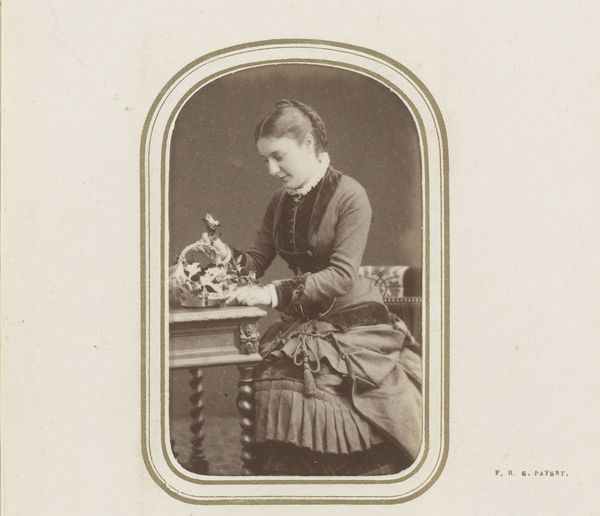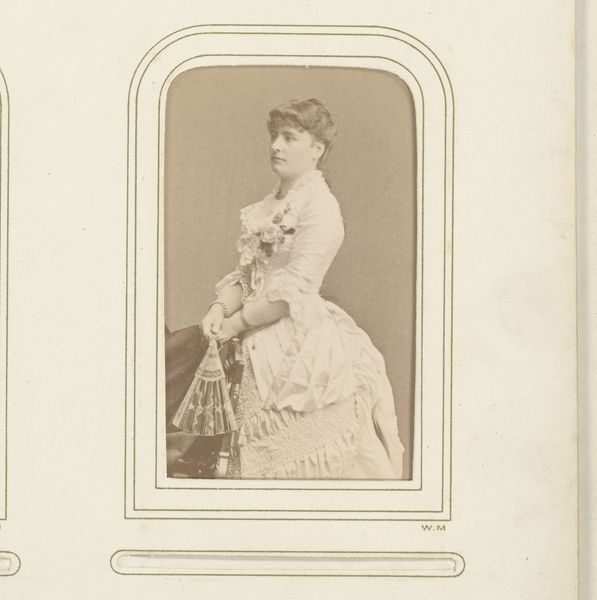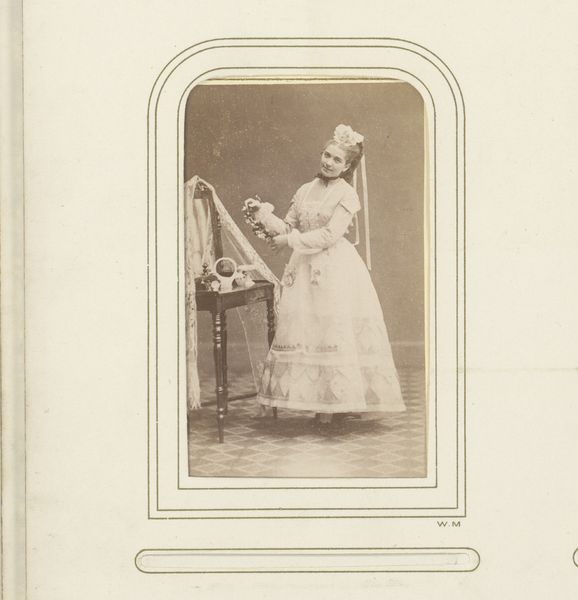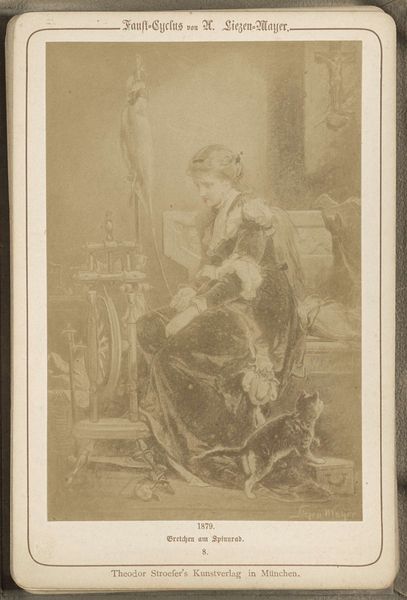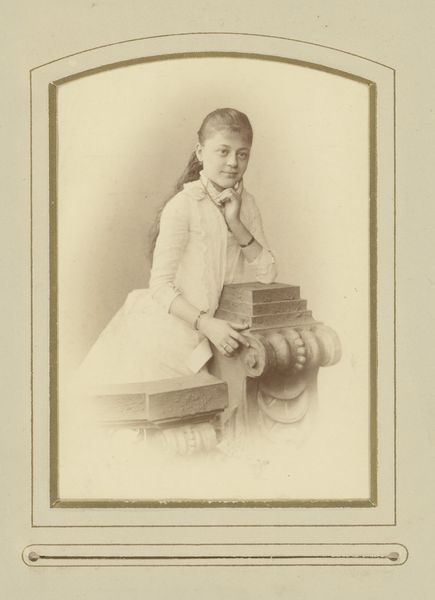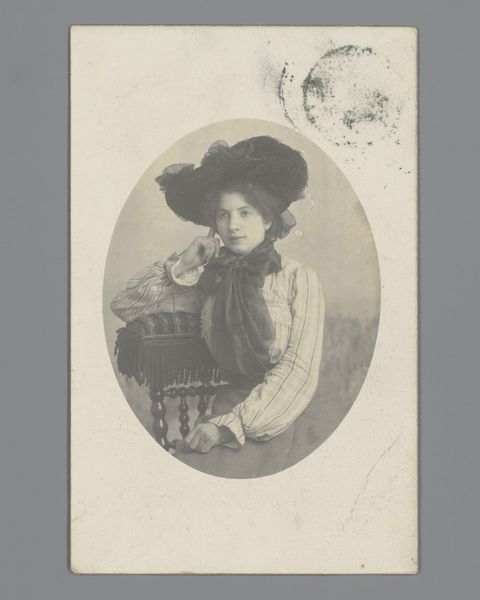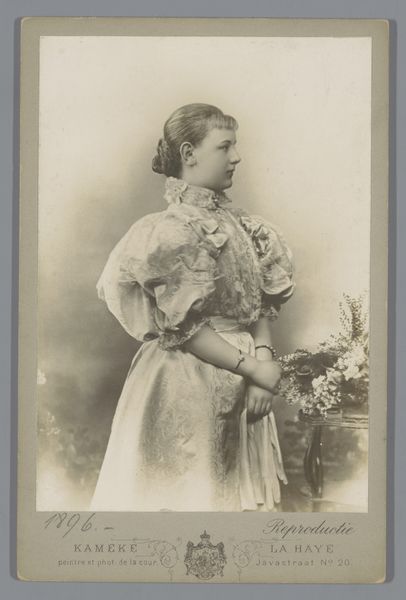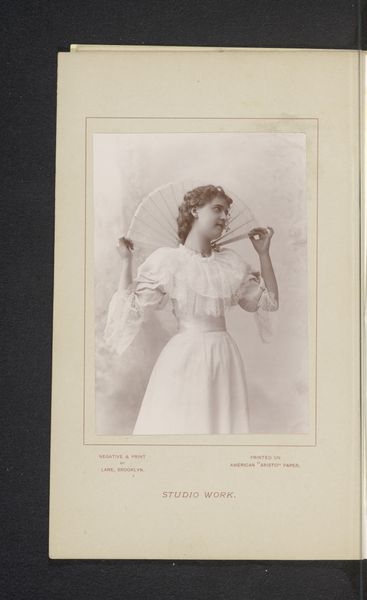
Genrescène uit Faust, Gretchen aan een spinnewiel, naar Goethe 1892 - 1900
0:00
0:00
Dimensions: height 285 mm, width 232 mm
Copyright: Rijks Museum: Open Domain
Editor: So, here we have an anonymous gelatin-silver print from around 1892 to 1900, titled "Genrescène uit Faust, Gretchen aan een spinnewiel, naar Goethe"—depicting a scene from Goethe's Faust, with Gretchen at her spinning wheel. It feels so staged, so Victorian. What do you make of it? Curator: The photograph certainly evokes that late 19th-century fascination with Romantic themes. Considering the source material, Goethe’s Faust, what power dynamics are immediately apparent when viewing this image? What are we meant to understand about Gretchen's position through this carefully constructed scene? Editor: Well, she’s at her spinning wheel, which makes me think about domesticity and perhaps even being trapped by societal expectations of women. The subdued tones also add a layer of melancholy. Curator: Precisely. The spinning wheel becomes a powerful symbol here. Is it merely a tool for domestic labor, or does it also represent Gretchen’s confinement within a patriarchal structure, her isolation, and her eventual tragic fate in Faust? This was a time when women’s roles were heavily scrutinized. This image is both a portrait of feminine virtue and potential victimhood, deeply entrenched in the socio-political context of the era. How might a contemporary feminist lens interpret Gretchen’s posture and the overall composition? Editor: It’s interesting to consider how the staged nature of the photograph adds another layer. It’s not just a simple depiction; it’s a carefully crafted statement, reflecting and perhaps reinforcing existing social norms. I didn't immediately think of the feminist lens. Curator: Indeed. Examining this work through an intersectional lens helps us see the intricate connections between art, literature, and the social and political landscape of the time, urging us to critically examine power, representation, and the ongoing narratives surrounding identity and gender. Editor: This has definitely given me a new perspective to consider—seeing art not just as aesthetic beauty, but also as a reflection of societal structures and power dynamics.
Comments
No comments
Be the first to comment and join the conversation on the ultimate creative platform.


